Chapter 2
Marketing Tools for Your Web Presence and Social Media
IN THIS CHAPTER
![]() Marketing on the web
Marketing on the web
![]() Getting listed in a search engine
Getting listed in a search engine
![]() Connecting with customers on social media (Twitter, Facebook, and so on)
Connecting with customers on social media (Twitter, Facebook, and so on)
After you set up your website (whether blog or business site) and eBay Store, it’s time to let the world know about it. Having spent many years in the advertising business, I can spot businesses that want to fail. They open their doors and expect the world to beat a path to them and make them rich. This doesn’t happen — ever.
You must take a proactive approach to letting the world in on the goodies you have for sale. This means spending time promoting your site by buying keywords on Google, getting your URL into a search engine, and taking advantage of social media. There are no shortcuts.
In this chapter, I tell you about ways to exploit the promotional opportunities you find online.
Advertising with Google AdWords
Wouldn’t it be cool if you could run ads all over the Internet at a low price? You can!
Google’s cost-per-click (CPC) offering, AdWords, is used by nearly every business on the web. If you are a regular user of Google search, you should be noticing small ads embedded in the search results with a tiny AD icon. I used to think these ads were expensive links from high-dollar operations — until I found out the truth. If you take a look at the ads I found in the results of a Google search in Figure 2-1, you’ll see the ads that companies bought to show up on searches for my name.
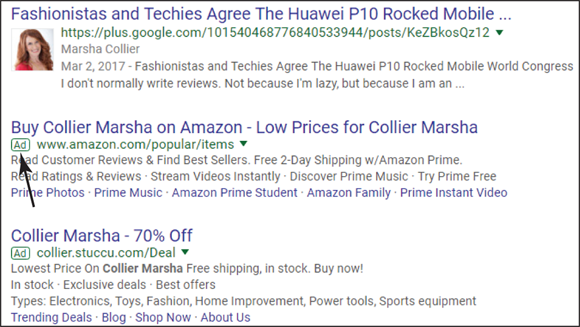
FIGURE 2-1: Okay, I googled myself.
According to numerous sources, 1.2 trillion searches were performed on Google in 2016; or about 3.5 billion per day. Google AdWords allow you to create the profitable little ads that accompany each of these searches. You choose keywords to let Google know where to place your ads. Certainly you can come up with some relevant keywords to promote your website or eBay Store.
You pay for such an ad only when someone clicks on it. Want to know more? Go over to https://adwords.google.com. Once you’re there, you can go over the details and set up your own campaign.
For your campaign, keep the following in mind:
- Keywords and keyword phrases: Come up with a list of keywords that would best describe your merchandise. Google allows you to estimate, based on current search data, how often your selected keyword will come up every day. Google will also estimate your daily cost, based on how many people click that word. That can be a shocking number. Don’t worry — not everyone who sees your ad will click it — but if they did, eeyow!
- CPC (cost-per-click): You determine how much you’ll pay for each click on your keywords. You can pay as little as $.05 a click. The dollar amount you place on your clicks makes the basis for how often your ad appears.
- CTR (click-through rate): This statistic reflects how many people click your ad when they see it. If your CTR falls below a certain percentage after 1,000 impressions, AdWords may slow or even discontinue your ad views. When one of your keywords isn’t passing muster, it will be indicated on your reports.
- Daily budget: You can set the cap in dollars on how much you’ll spend a day. Otherwise, if you had some really hot keywords, you could spend thousands on clicks.
Setting up an AdWords account takes a while and some thinking. So wait until your mind is clear (Saturday morning?) and sit down at the AdWords site with a cup of coffee.
Google gives you excellent step-by-step instructions after you’re signed in at https://adwords.google.com. This is the general process:
-
Decide whether you want to target your ads geographically.
You can pinpoint your market if you’d like, or you can blast the entire world. Choose from a list of 14 languages, 250 countries, or as far down as 200 United States regions.
-
Create your ad.
This is not as easy as I thought. You can create only three lines of ad text with a total of 95 characters. Be as concise as possible. Don’t throw in useless adjectives. Figure out the perfect 95 characters that will sell your site to the world. You must also supply the URL for your website or eBay Store.
-
Select your keywords.
Type your keywords and key phrases in the box provided. You can use Google’s Keyword Suggestion tool to help you out. Because this is your initial pass and won’t be etched in granite, feel free to take some wild stabs and see what happens.
-
Choose your maximum CPC (cost per click) and then click Calculate Estimates.
Here’s where the sticker-shock gets you. The displayed data lets you know which keywords you can afford to keep and which ones must be discarded. If you want to change your CPC amount, do so and click Recalculate Estimates. The Traffic Estimator calculates how much, on average, you’ll end up spending in a day.
-
Specify your daily budget.
There will be a prefilled amount that would ensure that your ad stays on top and gets full exposure every day. (No, Mr. Google, I do not want to spend $50 a day on my keywords.) Set a cap on your budget and Google will never exceed it. You may make it as low as you want; there’s no minimum spending amount, but it has to be more than zero.
- Enter your email address and agree to the terms.
-
Enter your billing information.
You’re minutes away from your ads going live on the Google index.
Getting Your Site Visible on a Search Engine
For people to find your site (and what you’re selling), they must be able to locate you. A popular way people do this is by searching with a search engine, so you should submit your site to search engines (they can’t find it unless it has a meta tag, which I talk about in a minute). Go to the search engines that interest you and look for a link or a help area that will enable you to submit your site. Be sure to follow any specific instructions on the site; some may limit the amount of keywords and the characters in your description.
To submit your URL to search engines, you need to do a little work (nothing’s easy, is it?). Write down 25 to 50 words or phrases that describe your website; these are your keywords. Now, using as many of those keywords as you can, write a description of your site. With the remaining words, create a list of keywords, separating each word or short phrase with a comma. You can use these keywords to add meta tags to the header in your document for your home page. Meta tags are identifiers used by search-engine spiders, robots that search the Internet for new sites to classify on search engines. Specifying a meta tag looks like this:
<meta name = "insert your keywords here separated by commas" content = "short description of your site">
Catch attention on Google
Have you ever googled your eBay Store or website? I did, by searching for the name of my eBay Store, which includes my name. Figure 2-2 shows you the top results.

FIGURE 2-2: Wow! My eBay Store shows up!
You, too, should Google yourself, your website, and eBay Store to see where and if it’s listed. If you find nothing, you’re missing out on a huge opportunity for free promotion. Google runs spiders (just picture the way a spider runs — swiftly and all over the place) that scour the Internet on a monthly basis, looking for data to add to the Google index.
Thousands of sites (and you do know that since your eBay Store has a unique URL, it’s considered to be a website) are added to the Google index every time its spiders crawl the web.
If your eBay Store or website isn’t listed, go to
as pictured in Figure 2-3. When you get to this page, follow the instructions to get your eBay Store URL indexed. To find your store’s URL, click the red store tag next to your eBay user ID to go to your store, and then copy and paste the URL (in the address line of your browser) into the URL line on the form. When I went to my eBay Store, I got this URL:
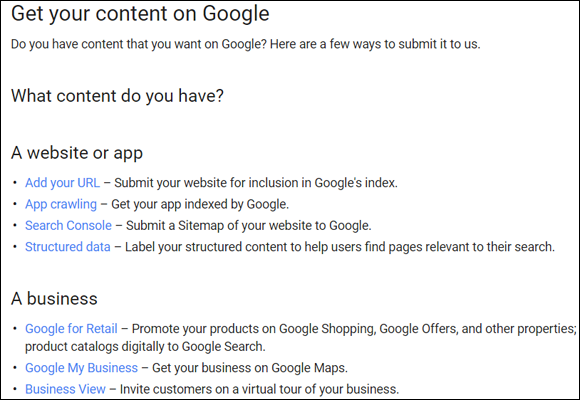
FIGURE 2-3: Get your free shot at the big time.
That’s the URL I use in my email and printed propaganda to promote my store.
There are no guarantees here, but odds are you’ll find your little shop on Google within a few weeks. To get the full benefit of Google’s massive power, once you’re signed in to Google (or Gmail), be sure to register and verify your business website on Google’s Webmaster Tools at
Get listed on Bing and Yahoo!
You will find that dealing with certain webmaster tools entails a fairly strong learning curve. So if you just want to get your site in line to appear in Bing’s search, just go to
The simplest form on the Internet — shown in Figure 2-4 — appears. Just type in the URL of your homepage, type in the captcha code you see, and you are good to go. Notice, too, that on the right of the form are some handy links to help you with your website.
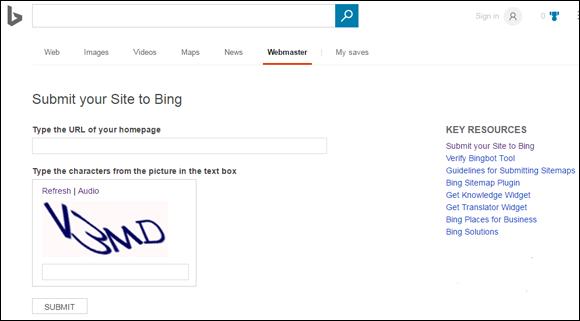
FIGURE 2-4: Submitting your site’s URL.
To be listed on Yahoo! it takes a bit more effort. Bing has taken over the submission chores for Yahoo! I’m afraid things will get a bit complex here. You need to sign up for Bing Webmaster Tools at
By signing up here, you will be able to improve your site's performance in both Bing and Yahoo! searches.
Casting for Customers in Social Media
Social media hosts networking conversations on many sites around the web — for example, on Twitter, Facebook, Pinterest, Google+, and a myriad others. These sites are places where easy engagement can lead to customer enticement.
In this conversational atmosphere, you can expect to
- Sell: Promote online and offline sales by posting promotions, discounts, and offers.
- Find new customers: Find people who are interested in a new vendor. Unhappy customers tend to be verbal on social media; maybe you’re the new vendor they are looking for.
- Build community: Join with others in your industry to share information. Connect with prospective and current customers to ultimately help drive new business.
- Observe the competition: Follow friendly (or unfriendly) competition to see how they handle social media outreach.
- Engage in customer service: Through connecting online, you can successfully engage with customers who are in need of help.
Your investment in social media networking may take a bit of time to pay off, but pay off it will. (Just stick with it.) I fully cover topics related to conversing through social media in my book Social Media Commerce For Dummies.
Building a Community on Twitter
Twitter is a convenient format for building an online community. If the thought of marketing through short-and-sweet messages appeals to you, Twitter may be the place for your online customer connections.
Some quick Twitter stats:
- Twitter has an estimated 310 million active users.
- Estimated total tweets average 500 million per day; that’s 6,000 tweets per second.
- Thirty percent of Twitter users have an income of more than $100,000.
- Twitter handles more search queries than Microsoft’s Bing and Yahoo! combined.
For Twitter to work for your social commerce, you have to follow people, listen, and take action by engaging in the conversation. Take the time to interact and foster relationships within the Twitter community. (Later on, I show you how to find people to follow who are likely to compliment your brand.)
Participating is not terribly hard because Twitter’s tweets are limited to 280 characters. If you send text messages on your phone, you’re given room for 160 characters, so moving from text messages to tweeting isn’t a big jump. After you get the hang of short messaging, tweeting can become second nature.
When promoting on Twitter
Your plan for Twitter should be to engage a good number of followers, drawing them to your business and brand. Become their virtual friend and give ’em a chance to turn into evangelists for your businesses. Twitter is not a numbers game unless you’re a multinational company (and have the staff to run the account).
Social media scientist and data-cruncher Dan Zarrella from Hubspot studies social media posts to find out which get the greatest attention. In contrast to Twitter — where information is exchanged among personal tweets — Facebook posts with a higher number of self-referential words (such as I and me) tend to get more Likes. Note that these posts aren’t marketing messages; they’re posts that involve you and your involvement with your business and customers.
Choosing who to follow
Twitter can work only when you follow other people and they follow you back. How do you get people to follow you? By commenting on another tweet, re-tweeting, tweeting content, or just jumping into a conversation that interests you.
Your first step is to go to the Twitter home page, at https://twitter.com, and click Sign Up for Twitter. On the resulting page, type your full name, your mobile number or email address, and a password, as shown in Figure 2-5.
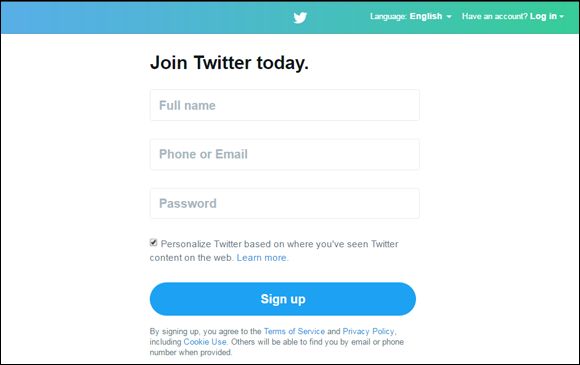
FIGURE 2-5: Enter a bit of data and you’re in! Fill out your bio (add your eBay store URL) on the following page.
After you register on Twitter, things may seem a little lonely for awhile. I signed up in early 2008 and was befuddled by the blank page that stared back at me. Twitter will post suggestions for people you might want to follow.
You can also try searching within Twitter. In Figure 2-6, I searched for the word eBay. Notice in the Navigation bar that you can select
- Top: Which would be most popular Tweets with the word eBay in them.
- Latest: Tweets mentioning eBay, shown in chronological order with the latest at the top.
- People: Here you will find other popular Twitter users who have the word eBay in their user ID or bio.
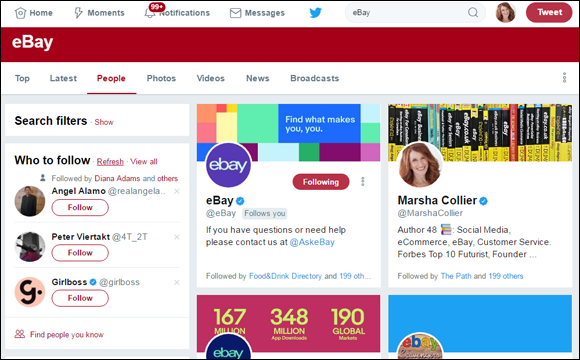
FIGURE 2-6: Using Twitter search helps you find people interested in your product.
Using this tool, you’re sure to find an interesting group of people to follow. Try inputting the type of merchandise you sell as well. For example, find out who’s talking about (say) golf, baseball, jewelry, or fashion.
Making Friends and Fans on Facebook
Making friends with strangers can feel creepy, especially on a personal Facebook page. But your prospective customers are all strangers until you interact with them.
I hope you have a personal Facebook page where you connect with friends and family. I do, and since I had a personal page long before Facebook allowed business pages, I have many business contacts there as well. This is the perfect way to get a feel for how Facebook works. When you post personal items, however, be sure to post them to appear only on the news feeds of close friends and family.
But to build your brand on Facebook, you have to start a business page. The hard part is moving business friends away from your personal page to your fan page. As I’ve said before, in today’s social media, business has become personal. So unless you’re new to Facebook, you will have some adapting to do.
Facebook business page benefits
A personal page is fun for connecting and sharing, but Facebook business pages have far more flexibility. The trade-off is that your business page will take a bit more finesse to maintain because it blends personal contact and marketing.
- You can have more than 5,000 friends (fans or Likes on your business page). Do you want that many? The answer is yes if you plan on selling anything online.
- You can use your business name as the page title, making it easier for the page to be indexed by Google. This helps your business’s SEO (search engine optimization) and may add strength to the listing position of your business website.
- Those who Like the page are opting in for your updates. Treat this valuable resource with respect and don’t barrage them with promotions.
- You can customize the page into a mini-site that includes contact forms, sales pages, blog feeds, contests, and even a store.
- Statistics are available on each individual post on your page.
- You can open a Shop on Facebook, adding products you carry in stock. Go to the Promote link and add products.
- Status updates are filtered by Facebook’s algorithm, which places what it deems to be the most relevant content in news feeds. Business pages can use a paid ad tool to enhance the number of views a single post garners. (I have seen success with a budget as small as $5 a day.)
- You can purchase ads that point to your business page or your website. These ads, which appear in Facebook’s right-side border, can be targeted using 15 criteria and even more subcriteria. You can narrow the audience to a city and even to a specific Zip code.
As a subtle touch on my business page, I use an application called Auction Items (despite the name, the app also posts your fixed-price listings). Applications such as this can only be used on business pages (see Figure 2-7). The application will be listed in the links on the left side of your business page. I find this app gives my items punch, and yet isn't as “in your face” as other marketing programs. You can find it to put on your page at https://www.facebook.com/AuctionItems.

FIGURE 2-7: The Auction Items app on my Facebook business page has clickable links that go directly to my eBay listings.
Engaging and building your audience
It’s time to be your charming self. As the head of your business, your business page should reflect you. In the beginning, you may feel as though you’re talking to yourself and a dozen or so family and friends. But don’t give up. Slow and steady wins the race.
Only one in five posts on your Facebook business page should be promotional. The other four posts should be about something your audience will appreciate but not directly about your business.
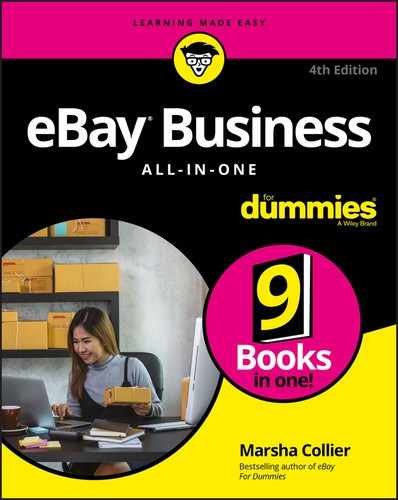
 In my book Social Media Commerce For Dummies, I go deeply into using social media to reach new customers. (You can find it at
In my book Social Media Commerce For Dummies, I go deeply into using social media to reach new customers. (You can find it at